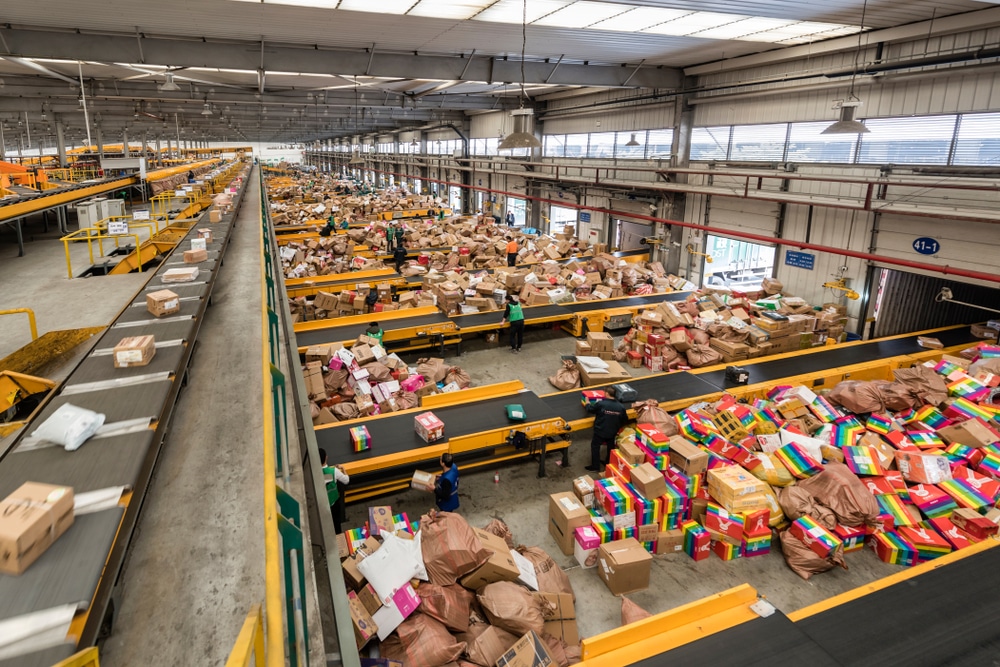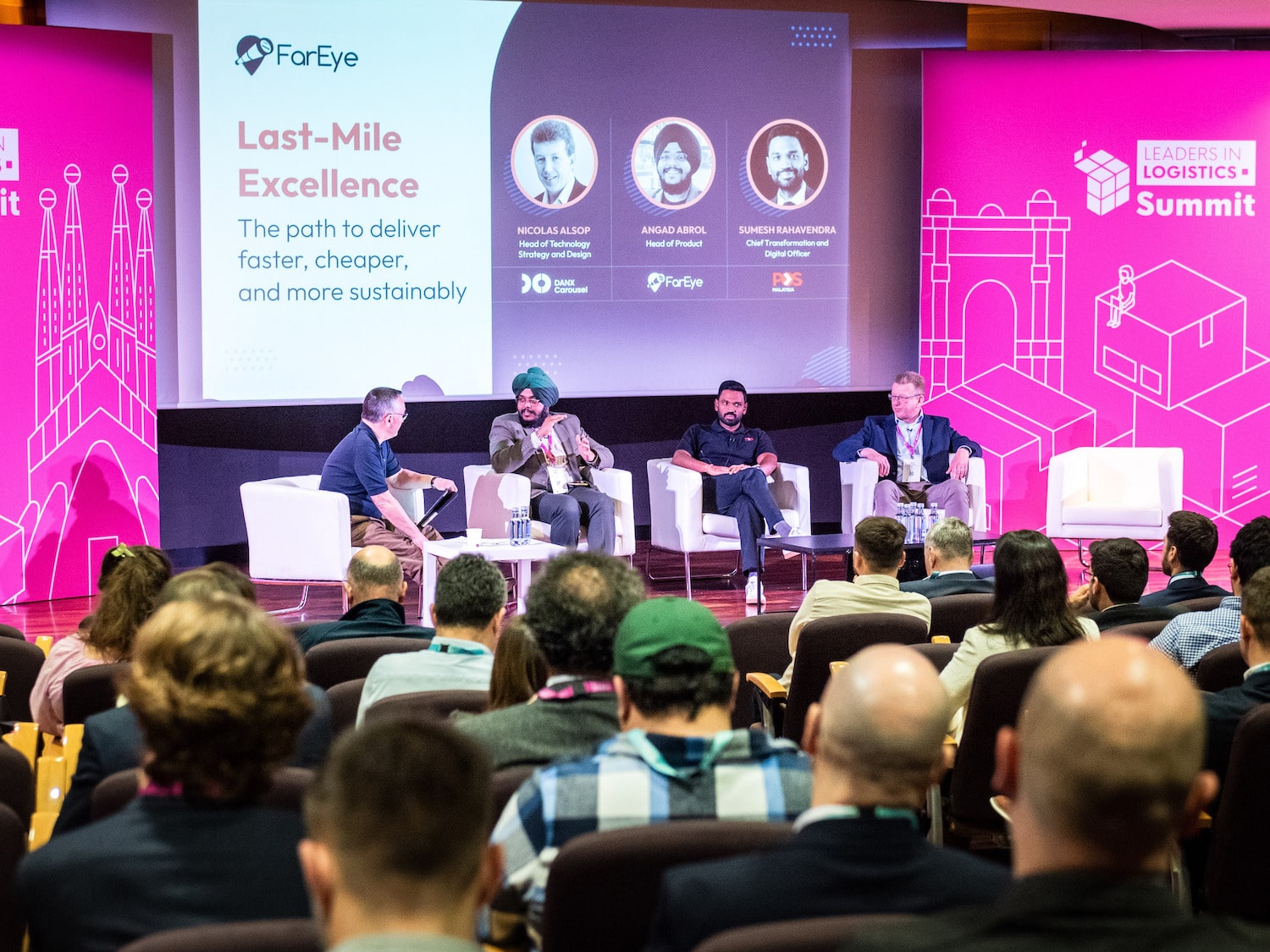Insight / Blog
eCommerce, Delivery and Returns 2020: 5 trends to know

It’s a new year and a new decade, but some things remain the same. As in December there are the end of year (and end of decade) roundups and best-ofs and recaps, so in January there shall always be the predictions and outlooks and trend guides for the new year.
In the spirit of the season then, we’ve assembled a panel from our executive team to give us their thoughts on what will change in 2020 and beyond. You’ll be glad to know that none of them would describe themselves as ‘thought leaders’ without cringing slightly, but they do all have deep and varied experience in retail, logistics and technology and some interesting and unique insights to share from working with leading retailers and carriers around the world, from Amazon to Australia Post.
To keep us in the real world, we’ve banned any spurious mentions of AI, blockchain and 5G, and outlawed predictions based on technology that doesn’t exist today. With all that in mind, enjoy our selection of some important and potentially overlooked trends in the fulfilment space this year.
More retailers will use stores to fulfil ecommerce orders

mike richmond, chief commercial officer
“Amazon delivered 3.5 billion parcels this holiday season. They’re so far ahead of the pack right now. If retailers are going to seriously compete with Amazon on convenience and speed of delivery, they’ll need to make the most of their biggest advantage, which is the fact that they have stores near to their customers and goods in those stores.
Once they figure out the tech part and can confidently say where stock exists at any given time, syncing it up to the website to allow ecommerce orders to be fulfilled by store stock is pretty simple. From there you can already start to offer instant click & collect, where customers choose the store they want to collect from, there’s a very short (30 minutes to an hour) turnaround time for staff to pick the item and store it for collection, and then the customer can show up and collect their purchase.
Amazon are pushing one-day delivery hard, but if what we’re after is speed then for many of us, dropping into a shop on our commute is not much of a hassle. Placing an order on the train and picking it up as I head into the office is a slick experience and something we’re already becoming used to with other types of shopping – look at the Starbucks app, for example.”

bob griffiths, head of product design
“This is really happening already, especially with US retailer Target. Their latest earnings showed that 80% of their growth was coming from same-day orders, and they’ve made a huge effort to fulfill those from their stores, because in the words of the CEO, that makes ecommerce orders look a lot more like store purchases, economically speaking. They’re showing a 90% reduction in cost for orders fulfilled from stores, which is going to be massive as online retail continues to grow and the costs of last-mile delivery continue to rise.”
Delivery options get streamlined to make more sense for everyone

tim robinson, chief executive officer
“The market for carriers at the moment means that carriers aren’t able to offer loyalty rates and long-term deals that offer security for them and value for retailers. Retailers are shopping around for deals, and rushing to offer a variety of delivery options, speeds and service levels to their consumers.
There are two problems with this. Carriers don’t get long term deals, and customers get a sometimes-baffling array of options. That can include premium delivery loyalty schemes, 3-5 day ‘standard’ delivery, two-day delivery as a standard offer, two-day delivery as a premium paid-for service, one-day and same-day (almost always as premium or loyalty scheme offers). At one point Boohoo had something like 40 delivery options. In truth consumers are less fussy about speed than this choice overdose suggests.
Cutting back on the number of options and having longer term deals with fewer carriers will mean reduced cost for retailers, better long-term stability of revenue for carriers and an improved customer experience at the checkout.“

rene schrama, ceo emea
“I think the incredible detail and focus that ecommerce teams put into conversion and the UX of their websites will continue to filter across into the after-sale experience, and the rationalisation of the delivery options will be a useful step towards retailers really thinking about customer experience after the purchase.
Right now the last mile experience is incredibly variable. Anecdotally we all have horror stories of stolen or lost parcels, or stuff simply never turning up. On the other hand, getting a delivery to your door is undeniably convenient a lot of the time. Citizen’s Advice say that 60% of shoppers had problems with deliveries last year.
The solution will have to involve greater adoption of alternative delivery solutions like click & collect or pick-up drop-off locations. Shifting the volume burden away from home delivery will help it to flourish as a premium service rather than the default, and carriers will be able to more consistently deliver a great experience without the immense volume pressure.“
Increased consumer consciousness of delivery impact on sustainability

mike richmond
“We know shoppers want to be sustainable and have proven willing to change some of their behaviours to make that difference. These changes, like the banning of plastic straws and adoption of re-usable cups for coffee, start as an awareness campaign. That awareness campaign and movement has not really come for delivery just yet, but I think it is beginning. In the last three months or so I’ve read multiple articles in national American publications about the negative externalities arising from ecommerce deliveries in cities like New York and LA.
Right now those stories are newsworthy because they are novel, but soon that narrative will start to be accepted as normal. This is not good news for retailers who aren’t able to differentiate from that as a default stereotype of delivery.
Added pressure to improve the sustainability and societal impact of delivery comes from Amazon’s rapidly scaling presence in the market. With the EU commission looking at Amazon’s potential monopoly power and individual city and state legislatures looking at the impact of ecommerce delivery in their locales; there is a real desire to effect change from the top down.
Paris Mayor Anne Hidalgo recently suggested charging Amazon and other businesses a fee for each delivery in the city, blaming it for “precarity, congestion and pollution”. Make no mistake, it’s not just Amazon. UPS and FedEx picked up nearly half a million parking violations in NYC in 2018 alone. In 2020, consumers will join politicians in paying much closer attention to these practices and their effects. Carriers and retailers will need to position carefully, but they have an opportunity to benefit from a distinctively green approach – perhaps incentivising customers towards PUDO.“

gary o’connor, chief technology officer
“Ultimately this comes down to truly owning the customer experience. That includes the experience of seeing delivery vans parked on double yellows, or having your door knocked on at 11pm when a guy who has been driving all day hands you a parcel and sprints back to the unmarked van he’s left in the road. That whole model of gig workers delivering parcels out of anonymous vans is not exactly up to scratch for most brands.
Thankfully for omnichannel retailers, they have customer experience ‘safe zones’ in the form of their stores. Directing customers to stores is a great way to regain their control over the experience.”
Marketplaces and ecommerce platforms start wielding more power in fulfilment

tim robinson
“Amazon have actually stolen some of my thunder here by proving me right before we even go to press with this piece, having just effectively kicked FedEx off Amazon Prime deliveries.
The contract for FedEx ground services had already been allowed to lapse by both parties, but now Amazon has told third party sellers (who are responsible for more than half of sales on Amazon.com) that listings fulfilled by FedEx will no longer be eligible for the all-important Prime denotation on the site, due to service limitations.
Of course, Amazon has led the way when it comes to marketplaces and ecommerce players throwing their weight around in fulfilment with ‘Fulfilled by Amazon’ but it’s hardly alone. eBay and Shopify both announced plans in the space this year, and eBay have particularly been working their merchant base to adopt best practices in terms of delivery times and return propositions. As we mentioned earlier, delivery and return options on marketplaces and platforms like Shopify are still various and inconsistent, which makes for a confusing customer journey. The availability of services like digital returns and pickup/dropoff access for collecting and returning parcels is patchy, which will in turn limit the user growth and revenue of the platforms themselves – hence their current charge to offer fulfilment services of their own.”
The economics of the last mile continue to incentivise the use of PUDO

mike richmond
“Amazon have built out a network of tens of thousands of PUDO locations between their Lockers and Hub Counters, because they’ve spotted the need and the opportunity. Other carriers are coming on board more slowly, but as we’ve discussed, the last-mile is becoming overcrowded, complex and congested. It’s harder than ever to serve, and consumers expect it for free. To globally deliver 200 billion parcels per year by 2025, carriers can’t rely on home delivery. PUDO adoption will grow this year as more carriers recognise the urgency of the need and the economic benefits it confers.”
The bigger picture
More broadly, barring a significant recession, ecommerce will keep growing, meaning more work for the fulfilment sector. Offline retail will continue to be a capricious beast as consumer confidence fluctuates and political decisions on Brexit finally manifest into reality. Retail will need to navigate choppy waters in the short term, but long-term fitness will rely on being digitally enabled, marrying offline store estate and inventory to online accessibility and convenience. Those who are able to offer fulfilment and returns customer experiences that give customers control and convenience will be well placed to succeed.
Topics:
Related articles
Return fees or free returns: why not both?
Debates between return fees or free returns miss the bigger picture: how to address the root issues of returns.
Important lessons from Leaders in Logistics 2024
Leaders in Logistics 24 dived into AI & automation, sustainability, changing ecommerce behaviours, emerging consumer expectations & predicted what the next decade had in store.
Postal results, reforms, and returns
Posts around the world are seeking reform, but how can they drive improved results in the short term?












